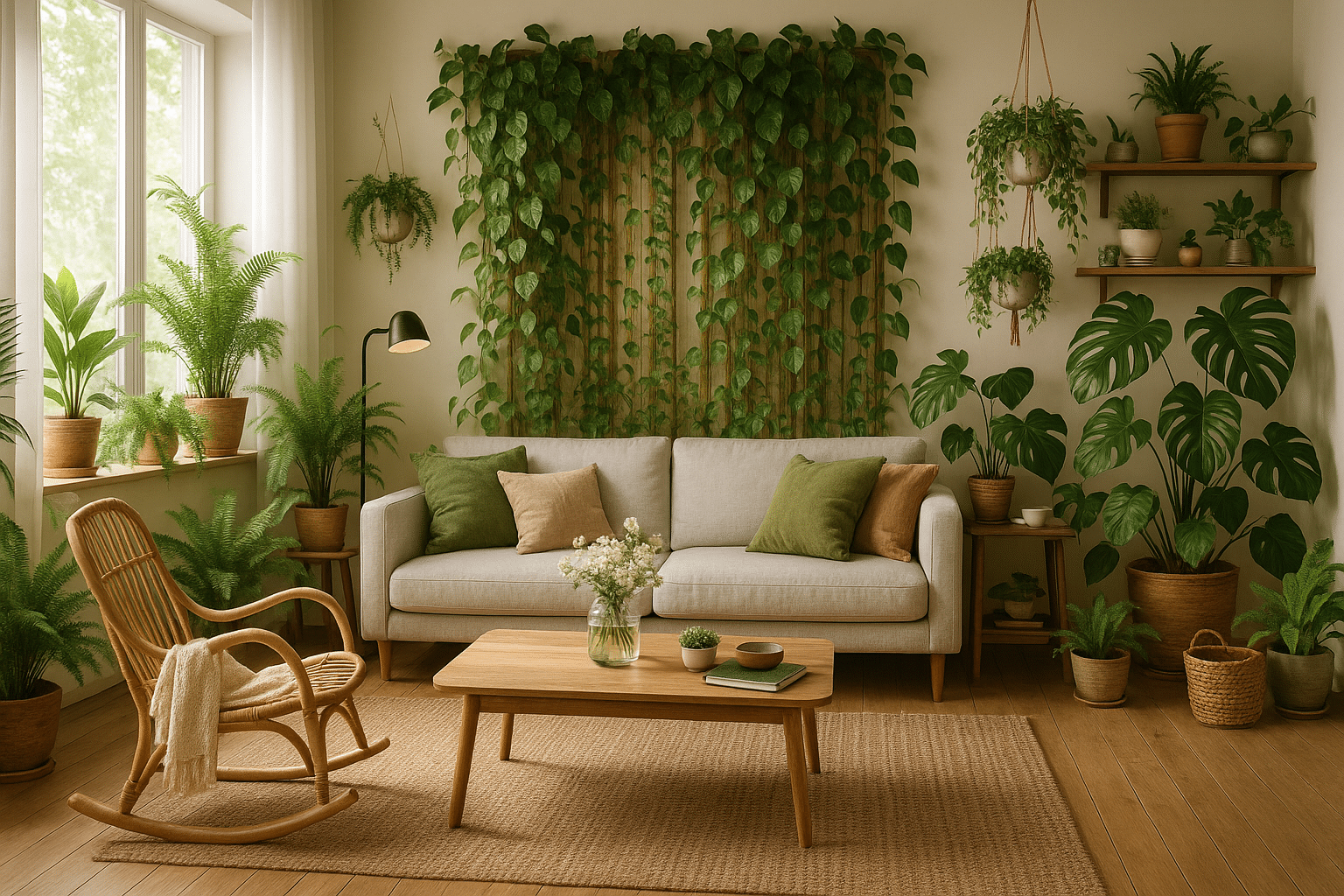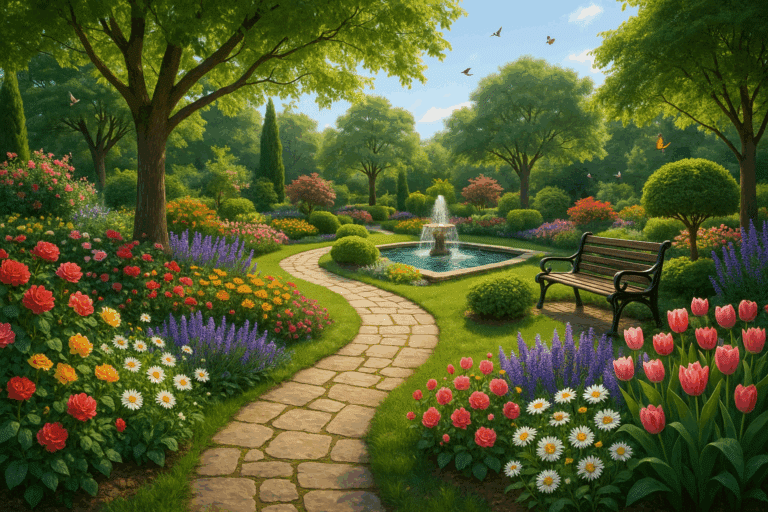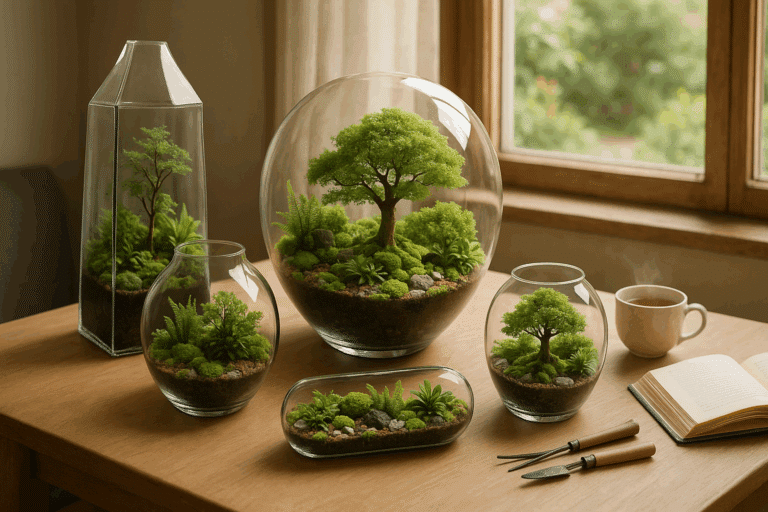A serene retreat, teeming with lush greenery and the soothing trickle of water? Imagine a place where you can unwind, breathe in the scent of flourishing flora, and savor the ethereal beauty of nature’s artwork. No, it’s not a fantasy, nor is it a far-flung paradise. This utopia can be found right within the confines of your home – an indoor garden, your personal Eden. 🌱
With the contemporary trend towards compact living spaces, many of us are detached from nature’s embrace. The tactile pleasure of soil between our fingers, the rejuvenating sensation of plant-hued air filling our lungs, and the gratifying sight of a seedling turning into a thriving plant – these experiences are gradually fading away. This article is dedicated to reviving those sensations and guiding you in crafting your personal indoor paradise.
In this comprehensive guide, we will delve into the fascinating world of indoor gardens, demystifying the science and art of nurturing an indoor Eden.
🔍 Why Indoor Gardens?
Indoor gardens are more than just a decorative addition to your home. They act as a powerful antidote to urban living’s stressful hustle and bustle, providing a soothing sanctuary for your mind and soul. Plus, these leafy companions have scientifically proven health benefits, such as improved air quality and increased humidity. They are also a great way to cultivate your gardening skills before venturing into a full-fledged outdoor garden.
💡 Our Approach
We understand that setting up an indoor garden might seem daunting at first. Hence, we’ve structured this guide to be a comprehensive resource, addressing every aspect of indoor gardening. Whether you are a seasoned green thumb seeking new challenges or a newbie just starting your horticultural journey, this guide has something for everyone.
🌿 What’s Inside?
We commence with the basics, helping you understand the different types of indoor gardens and how to choose one that fits your space, lifestyle, and preferences. The guide then progresses into the technical nitty-gritty, including understanding light requirements, choosing the right soil, watering techniques, and plant nutrition.
We also share insider tips on plant selection, ensuring you have the right combination of plants that thrive in similar conditions. The guide further delves into creative aspects such as designing your garden for maximum aesthetic appeal, DIY ideas, and advanced techniques like hydroponics and terrariums.
Finally, we address common challenges faced by indoor gardeners and how to overcome them, including pest control, managing diseases, and troubleshooting common plant problems.
👩🌾 Ready to embark on your journey?
As you embark on this journey to create your indoor Eden, remember that it is not a one-size-fits-all endeavor. Each indoor garden is unique, reflecting the personality and preferences of its caretaker. Feel free to experiment, make mistakes, learn, and grow along with your plants.
Creating an indoor garden is a rewarding journey that feeds your soul, brightens up your living space, and brings you closer to nature. So, are you ready to dive in and discover your own indoor paradise? 🌱🌸
Creating a Blueprint for Your Indoor Eden
Establishing your indoor paradise requires a detailed blueprint that comprises elements of design, botany, and, to a certain extent, technology. Unearthing the secret of creating a perfect indoor haven is a blend of understanding plant science and space utility.
One of the most fundamental aspects of creating an indoor Eden is the selection of the right plants. While choosing the flora for your indoor garden, you need to consider factors such as light, humidity, and temperature conditions of your home. Each plant species has unique requirements, and an understanding of these needs will enable you to create a harmonious and thriving indoor garden.
The space you allocate for your garden is another vital factor. Whether you are designing a small windowsill garden or a large conservatory, the layout and organization play a significant role in the aesthetic and functional success of your indoor Eden. Organizing your plants in a way that mimics their natural habitat not only promotes their health but also contributes to the overall appeal of your indoor garden.
🌿 Selecting the Right Plants
When it comes to indoor gardening, plant selection is critical. Not every plant is suitable for indoor cultivation, and some may require special care or conditions. The following table gives a comparison of some popular indoor plants and their requirements.
| Plant | Light Requirements | Humidity Requirements | Temperature Range |
|---|---|---|---|
| Snake Plant | Low to Bright | Low to Moderate | 70-90°F (21-32°C) |
| Peace Lily | Low to Medium | High | 65-80°F (18-27°C) |
| Rubber Plant | Bright | Low to Moderate | 60-80°F (15-27°C) |
For more information on selecting indoor plants, watch “10 Best Indoor Plants for Decoration – Air Purifying Plants” by Garden Up on YouTube. They provide useful insights into indoor plant selection and care.
Designing Your Indoor Garden
Once you’ve selected your indoor plants, it’s time to arrange them in a manner that optimizes their growth and enhances your space. To do this, consider the growth pattern and size of each plant, the availability of natural light, and the color scheme of your home.
Grouping plants together based on their light and watering needs can make maintenance easier. At the same time, considering the aesthetic appeal of different plants together can create visual harmony. A tall Monstera can be paired with trailing Golden Pothos, while a collection of succulents can create a mini desert landscape on your windowsill.
Ensure that your plants have enough space to grow. Overcrowding can lead to poor air circulation, which can encourage the spread of pests and diseases. Lastly, consider using a variety of planters. Different types and sizes of planters can add texture and depth to your indoor garden.
🌱 Indoor Gardening Techniques
There are several indoor gardening techniques that you can employ to make the most out of your space and plants. Vertical gardening, hydroponics, and terrariums are just a few methods that can be used. For more details, watch “Indoor Gardening – Simple, Convenient, and Fun” by MIgardener on YouTube.
Enhancing Your Indoor Eden with Technology
With advancements in technology, maintaining an indoor garden has become more manageable and efficient. There are now smart planters and watering systems available in the market that take care of your plants’ needs automatically. Some even come with an app that provides real-time updates and reminders about your plants’ care.
Smart lighting systems are another technological enhancement that can significantly benefit your indoor garden. These lighting systems can mimic the natural light spectrum and can be customized to provide the perfect light conditions for your plants. Some high-end models even adjust the light intensity and duration according to the time of the year, mimicking the changing seasons outdoors.
Lastly, indoor gardening apps can help you keep track of your plants’ care schedules, provide tips and tricks for maintaining your garden, and offer a platform to connect with other indoor gardening enthusiasts. Some popular apps include Planta, Vera, and SmartPlant.
🌞 Harnessing Technology for Indoor Gardening
To understand how technology can enhance your indoor gardening experience, watch “Indoor Gardening Made Easy” by Technology for a better life on YouTube. The video provides valuable insights into various gardening technologies available in the market.
Creating your indoor Eden is a rewarding experience that can transform your living space into a thriving, green oasis. With the right selection of plants, a thoughtful design, and the aid of technology, you can enjoy your indoor paradise year-round.

Conclusion
In conclusion, the complex world of IT and software engineering is one that requires continuous learning and understanding. This article was created with the aim of providing an in-depth explanation of these concepts in a way that can be easily understood, even by those who may not have a technical background. It’s important to keep in mind that this field is constantly evolving, so staying up-to-date with the latest trends and technologies is crucial for success.
The key points that were discussed in this article include the importance of IT and software engineering, the challenges faced by professionals in these fields, and the various strategies that can be used to overcome these challenges. We also delved into the different aspects of IT and software engineering, such as system design, coding, testing, and maintenance.
The IT and software engineering industry holds immense potential for innovation and growth. The advancements in this field are not only transforming businesses but also our daily lives. As such, it’s paramount to appreciate the role of IT and software engineering in shaping our future.
Moreover, the practical tips and insights shared in this article can serve as a valuable resource for professionals who are striving to enhance their skills and knowledge in this domain. From mastering the art of problem-solving to understanding the nuances of system design and coding, there is much to learn and apply.
We encourage our readers to not only read this article but also to share it with others who might find it useful. Feel free to leave your comments or questions below, and we will do our best to respond.
To further enrich your knowledge, you may also refer to other credible sources such as Computerworld, TechRepublic, and InfoWorld for more in-depth information on the subject.
Remember, every new piece of knowledge you acquire gives you an edge, and every challenge you encounter is an opportunity for growth. So, keep learning, keep growing, and keep pushing the boundaries of what is possible in the world of IT and software engineering. 🚀💡🌐
References:
– [Insert list of references here. Make sure all the links are active]
At the end of the day, it’s about making the most of the opportunities presented to you and using your knowledge and skills to make a meaningful impact. Thank you for taking the time to read this article, and we hope it has provided you with valuable insights and information. Keep the conversation going and continue to explore the fascinating world of IT and software engineering. 🌟🔍💻



